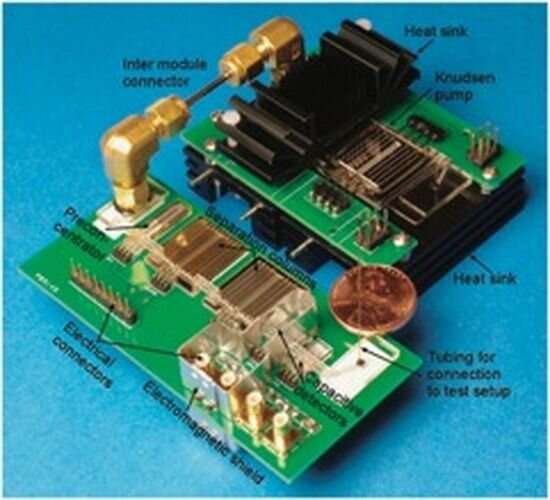Detecting environmental pollutants with a smaller, portable, fully electric gas chromatograph

Prof. Yogesh Gianchandani and Dr. Yutao Qin designed a fully electronic micro gas chromatography system to improve the detection and monitoring of indoor air pollutants. Their 2016 paper describing the research, "A fully electronic microfabricated gas chromatograph with complementary capacitive detectors for indoor pollutants," published in Microsystems & Nanoengineering, received an Outstanding Paper Award in 2020.
All the components in Gianchandani and Qin's fully electronic micro gas chromatography system are lithographically microfabricated, making it easier to manufacture. The system detects and analyzes minute concentrations of several common volatile organic compounds (VOCs), which contribute to indoor air pollution. VOCs can be serious health hazards, and some, such as benzene, are known carcinogens.
Gas chromatography has long been used as a means to evaluate air quality, but typical commercial gas chromatographs are large, difficult and expensive to manufacture, and aren't portable.
"In order to do an analysis, people would have to collect a sample in the field and bring it to the lab," Qin says. "We made a smaller, portable system, so that we can carry the instrument to the field instead."
Gianchandani and Qin built and integrated the entire system including all components like a microfabricated pump, a preconcentrator, separation columns, and a pair of capacitive detectors. Unlike tradition systems, which contain mechanical and optical components, Gianchandani and Qin's system is fully electronic, making it easier to integrate and mass produce.
Currently, Gianchandani and Qin's chromatograph is programmed to detect and analyze 19 chemicals—including alkanes, aromatic hydrocarbons, aldehydes, halogenated hydrocarbons and terpenes—but they are working on expanding its capabilities to detect many other pollutants as well. They've licensed their work to Omniscent, a startup co-founded by Gianchandani and Qinin in 2016.
More information: Yutao Qin et al. A fully electronic microfabricated gas chromatograph with complementary capacitive detectors for indoor pollutants, Microsystems & Nanoengineering (2016). DOI: 10.1038/micronano.2015.49




















